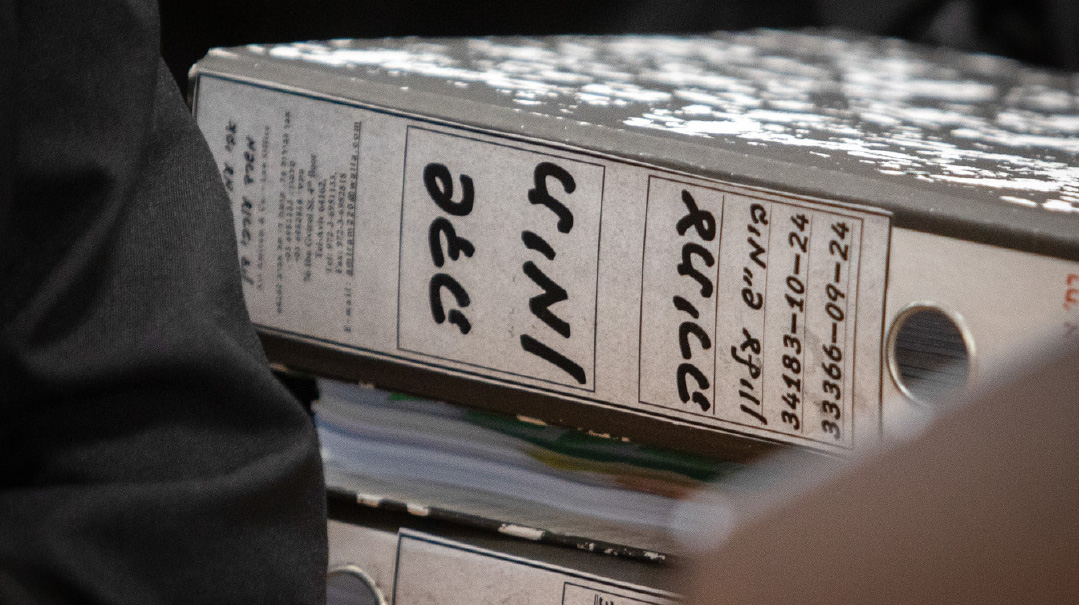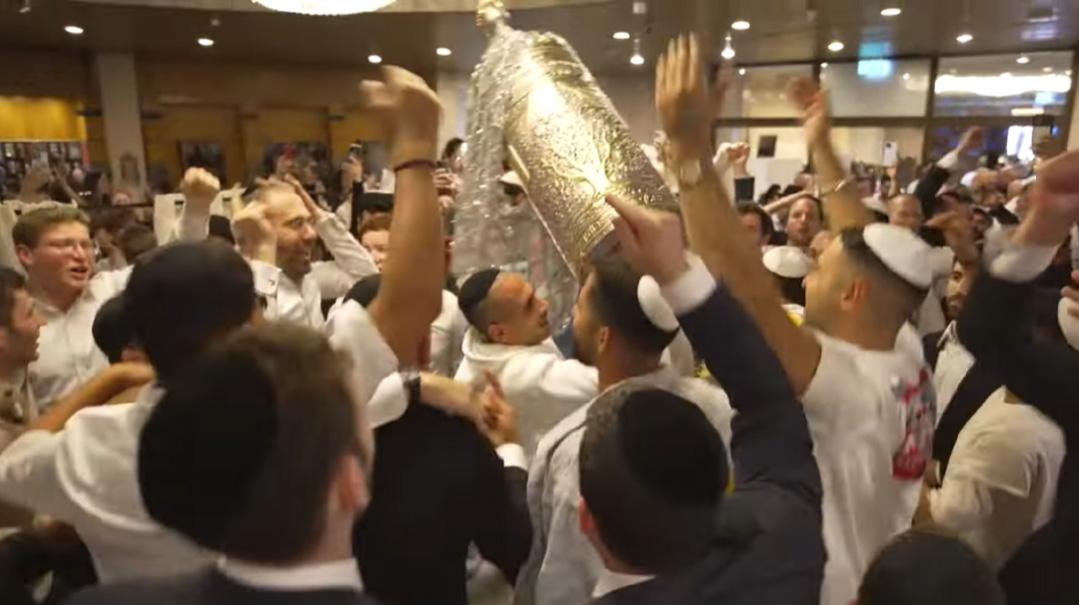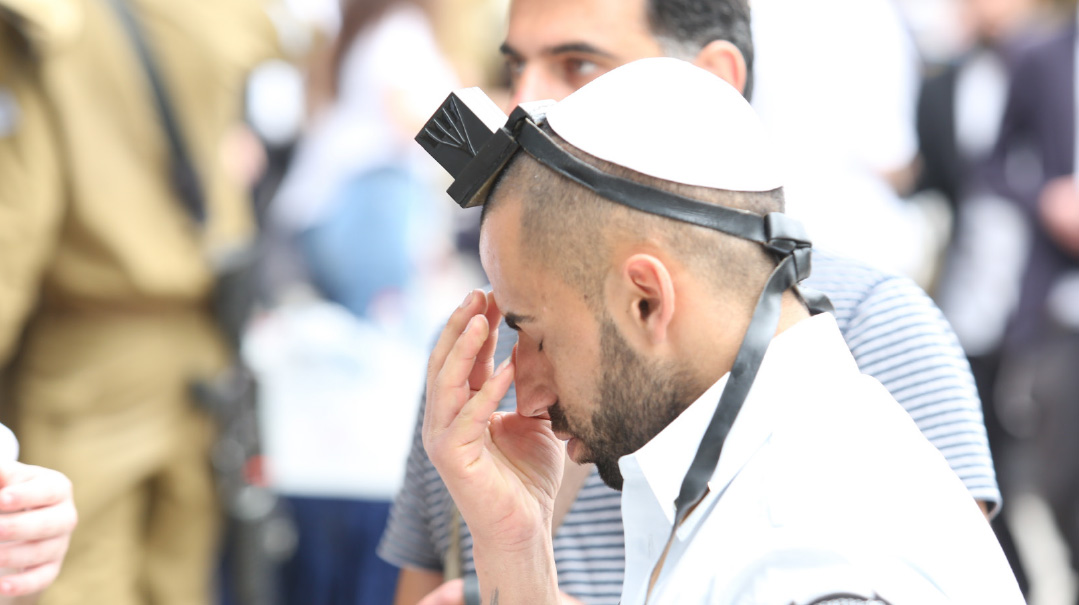Whatever Happened to Kiddush Hashem?

"It’s about bringing light to the world and not, chas v’shalom, the opposite”
It has been a very bad week for me. Over 40 years ago, my new wife and I joined the chareidi world. For 30 years, I have been a sometime spokesperson for that community, at least to the outside world. And suddenly, I find myself wondering whether I understand anything about the community, or at least a major swath of it, and its mindset.
My only solace came when I mentioned how disoriented I’m feeling to my rav, a major talmid chacham and respected dayan, and he expressed the same feelings, despite having been raised from birth in the heart of the Israeli chareidi world.
My bad week began Thursday night, parshas Bo, when someone sent me a clip of a melee in a Bnei Brak yeshivah, which some undercover cops entered to investigate whether COVID regulations were being kept. They were discovered and set upon by a mob. Police reinforcements were called in. The windows of police cars were smashed.
The following Monday, a municipal bus driver in Bnei Brak was dragged from his bus, and the bus was set on fire. In the Knesset, MK Rabbi Moshe Gafni described the perpetrators as chareidi youth “from the fringes.” And photos from the scene seemed to confirm that. But even youth on the fringe are more likely to act violently when there is already violence in the air.
The police and fire departments did not respond to calls from neighborhood residents for hours as the bus burned, whether out of a desire to punish the chareidi community or out of fear of being attacked. Meanwhile the flames from the burning bus melted curtains in the adjacent apartment building, forcing residents to flee.
Also at the beginning of the week, protests in Jerusalem against the expansion of the light rail turned very violent. A neighbor who davens in the same minyan I do (with strictly enforced social distancing) was on the train, and described to me how terrified he was when it was attacked by a mob, who smashed every window on the train with hammers and threw black paint on the cars.
In what the US media would have described as “mostly peaceful protests,” cement was also poured onto the tracks. According to a spokesperson for the light rail, the cement could have derailed a car and caused it to tip over, with lethal consequences. From blocking traffic and burning garbage cans in their own neighborhoods, certain elements in the chareidi community have moved on to potentially murderous actions. They have fully appropriated the “hands of Eisav.”
TO TELL THE TRUTH, the overwhelmingly sane majority of the chareidi community has long since learned to deal with the cognitive dissonance caused by the violence of a not insignificant minority. We tell ourselves a clever vertel — e.g., tzibbur (a public) is formed of the letters tzadi, for tzaddikim (the righteous); beis, for beinonim (the average): and reish, for resha’im (evildoers); and every community will have some of each. Or, we tell ourselves that those who sought to destroy the light-rail trains come from the same community that the Chazon Ish already described 70 years ago as “Jews before Matan Torah.”
But what really sent me into a tizzy was the photo of a large group of chareidi-attired Jews, some wearing tefillin, all without masks, on a recent United Airlines flight to Israel. According to the accompanying story in the Times of Israel, the other passengers repeatedly implored the chareidi passengers to wear masks and not to all daven together. They were ignored. Secular passengers reported having to go to the restrooms to eat their meals because they were terrified to lower their masks with so many unmasked fellow passengers around, including in the aisles through which they had to pass.
I imagine that many of those who did not deign to respond have learned the Gemara (Yoma 86a) that asks: “What is chillul Hashem?” and proceeds to describe its opposite, kiddush Hashem, in terms of the verse, “You shall love the L-rd, your G-d.” To love G-d, says the Gemara, means to make the Name of Heaven beloved through your actions. To conduct your business affairs with pleasantness. To cause those who see you to exclaim, “Happy is the father who taught him Torah! Happy is the rav who taught him Torah.”
How was that achieved by failing to even acknowledge the fears of their fellow travelers? Was anyone even thinking about whether they were bringing other Jews closer to Torah or pushing them away? Callousness, disrespect, and a refusal to even be goreis our fellow Jews will not bring them closer to Torah.
Rather, when they hear that we are demonstrating in order to show how precious Torah is to us, are they not likely to think, “If Torah teaches the kind of middos shown on the plane or in the recent violent demonstrations, better that they should not learn Torah”?
A recent Gallup poll shows that Americans express about the same degree of belief in G-d as they did 45 years ago — 87 percent. But their faith in organized religion has declined sharply, from 70 percent in 1975 to just 42 percent today. Yuval Levin explains that Americans increasingly “have trouble believing… that our churches, seminaries, religious schools and charities remain capable of forming trustworthy people who actually exhibit the [qualities] they preach.”
Levin was writing primarily in light of the spate of scandals, financial and otherwise, that have beset major Christian religious leaders of late. But there is a message for us as well. If those with whom we come into contact perceive in our behavior a certain refinement, depth, and pleasantness, then they are more likely to believe that the routines of a religious Jew’s life — prayer, Torah learning, and charitable deeds — form us into better people. And if they don’t see that, they are more likely to ask, “What is the point in exploring Torah Judaism?”
Through our behavior, we are salespeople for Hashem and His Torah. And of late, too many of us have not been particularly good salespeople.
Worse, I fear that too many of us do not view that as our task in life. And yet a constant awareness of the potential for kiddush Hashem or its opposite in our every action was the most prominent common element shared by all the great figures about whom I have written.
Rabbi Meir Schuster, for instance, was a man of few words. Yet once he expressed himself with great intensity when his host, Sam Friedland, remarked offhandedly on a Shabbos morning walk to shul, “What’s it all about?”
Rabbi Schuster became uncharacteristically animated, and placed his index finger on Friedland’s chest. “You want to know what it’s all about?” he asked. “You want to know? Well, I’ll tell you. It’s about bringing light to the world and not, chas v’shalom, the opposite.”
A simple role for living, but one that many of us have lost sight of to a great extent.
THIS WEEK I had a conversation with my oldest grandson, 15. We were discussing the relative merits of Jerusalem and Bnei Brak as places to live, and he said that Bnei Brak has one clear advantage: It is an all-chareidi city.
I questioned whether that was a good thing, on two counts. First, I suggested that often having to define oneself in juxtaposition to one’s surroundings results in a deeper, more thought-out religious identity. As a wise man once told me, “I raised four children in Tel Aviv, and four in Bnei Brak. In Tel Aviv I raised them; in Bnei Brak, the street raised them. I think I did a better job.”
Secondly, living in an insular community can also lead to forgetting that there are lots of other Jews out there to whom we are bound and for whom we bear responsibility. The chareidi passengers on the plane either forgot that or, worse, were never taught it in the first place.
Originally featured in Mishpacha, Issue 847. Yonoson Rosenblum may be contacted directly at rosenblum@mishpacha.com
Oops! We could not locate your form.







